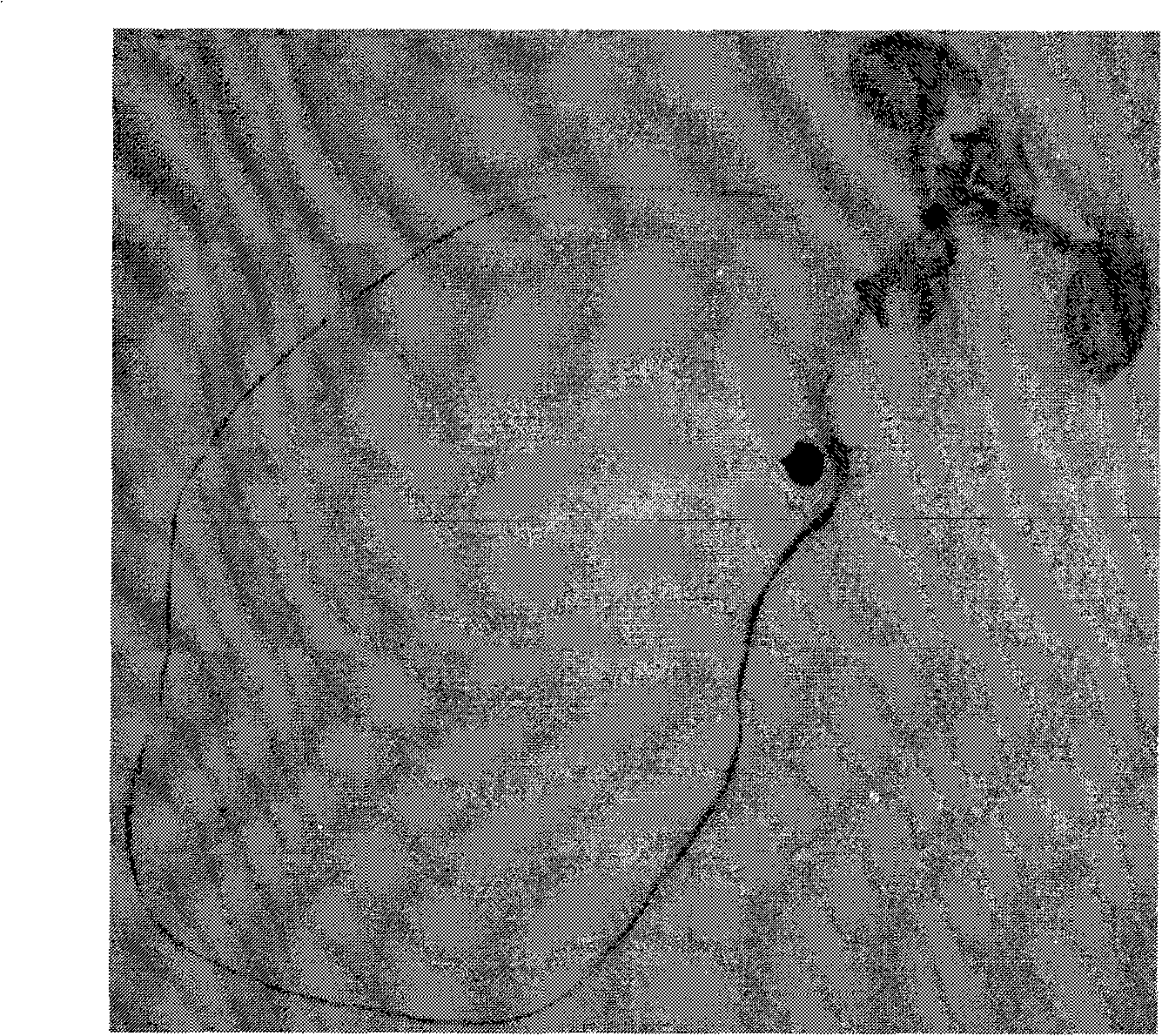Root specific promoter and recombinant expression vector thereof
An expression vector and promoter technology, applied in the field of plant genetic engineering, can solve the problems of plant growth inhibition, unfavorable transformation of plants, plant dwarfing, etc., and achieve the effect of enhancing expression activity and increasing inducible expression ability
- Summary
- Abstract
- Description
- Claims
- Application Information
AI Technical Summary
Problems solved by technology
Method used
Image
Examples
Embodiment 1
[0025] Embodiment 1, the acquisition of SP promoter sequence
[0026] Using 1-week-old Colombian ecotype wild-type Arabidopsis plants as experimental materials, the genomic DNA was extracted and used as a template, primers were designed from the published Arabidopsis genome database, and the SP promoter sequence was amplified by PCR. Introduce BamHI and EcoRI restriction sites at both ends of the primer respectively, and the primer sequence is as follows: Upstream: 5′-ACGGGATCCACCATTCACGGTAGGTTCTTTTAT-3′, BamH I restriction site is introduced; Downstream: 5′-ACGGAATTCTCTTGCGTTTACTGTTTTTGC-3′, EcoR I enzyme is introduced cut site.
[0027] Perform agarose gel electrophoresis detection on the PCR amplification product, cut off the target band to purify and recover, connect the digested product to the pGEM-T Easy vector and transform Escherichia coli DH10β competent cells, and pick it on the Amp resistance plate From the grown single clone, the plasmid was extracted, identified ...
Embodiment 2
[0028] Embodiment 2, the construction of the recombinant expression vector carrying SP promoter and GUS gene
[0029] Plasmid p-SP and plasmid pCAMBIA1391 (purchased from pCAMBIA Company) were digested with BamH I and EcoR I for 3 hours at 37°C, respectively, and the digested products were analyzed by 1% agarose gel electrophoresis, and the 845bp SP promoter was recovered The sequence and the 12kb plasmid pCAMBIA1391 digested large fragment were ligated overnight at 4°C with T4 DNA ligase. The ligation product was transformed into Escherichia coli DH10β competent cells, and the single clone grown on the Kan resistance plate was picked, the plasmid was extracted, and identified by PCR and enzyme digestion. The obtained recombinant expression vector is named pCAMBIA1391-SP, and the physical map of the recombinant expression vector pCAMBIA1391-SP is as follows figure 1 shown.
Embodiment 3
[0030] Embodiment 3, SP promoter drives the specific expression of GUS gene in Arabidopsis root
[0031] 1. Transformation of wild-type Arabidopsis with recombinant expression vector pCAMBIA1391-SP
[0032] The recombinant expression vector pCAMBIA1391-SP constructed in Example 2 was transformed into Agrobacterium tumefaciens GV3101 competent cells, and single colonies growing on Rif and Kanamycin (Kan) resistant plates were picked for PCR identification.
PUM
 Login to View More
Login to View More Abstract
Description
Claims
Application Information
 Login to View More
Login to View More - Generate Ideas
- Intellectual Property
- Life Sciences
- Materials
- Tech Scout
- Unparalleled Data Quality
- Higher Quality Content
- 60% Fewer Hallucinations
Browse by: Latest US Patents, China's latest patents, Technical Efficacy Thesaurus, Application Domain, Technology Topic, Popular Technical Reports.
© 2025 PatSnap. All rights reserved.Legal|Privacy policy|Modern Slavery Act Transparency Statement|Sitemap|About US| Contact US: help@patsnap.com



